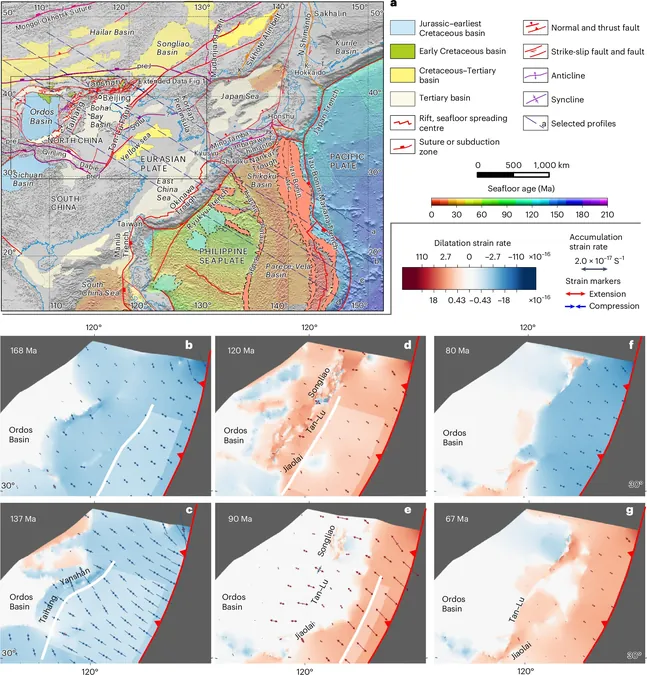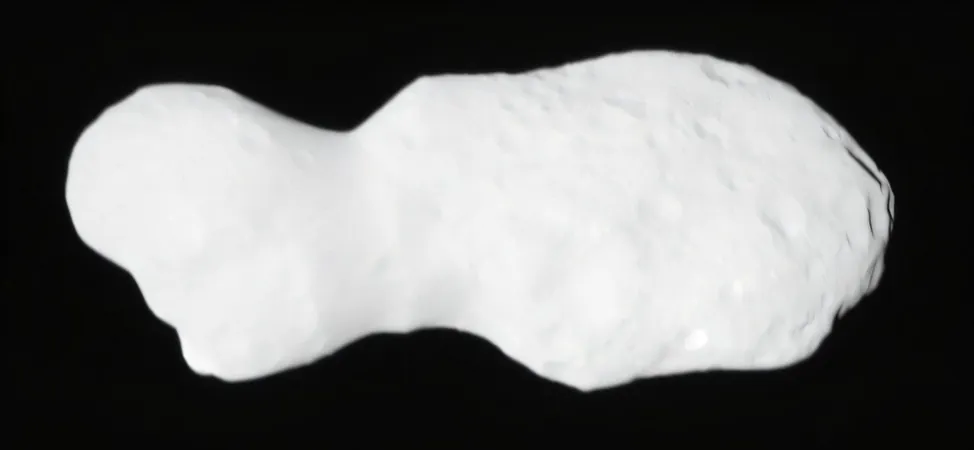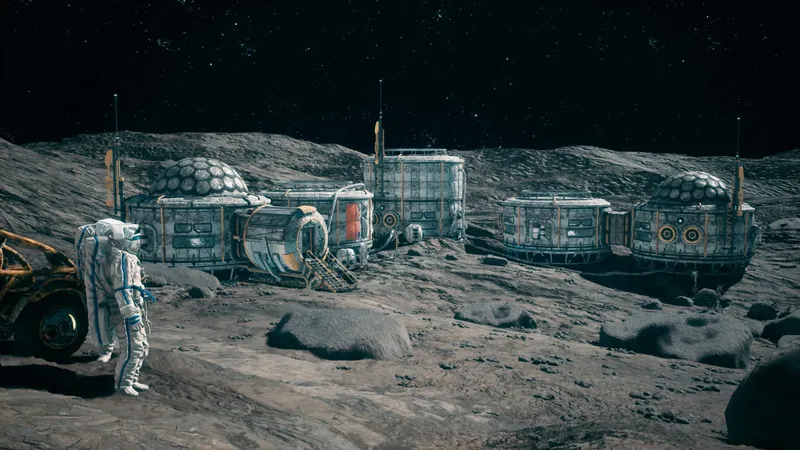
Revolutionary Model Unveils Secrets Behind North China's Crustal Deformation
2024-11-03
Author: Michael
Introduction
Cratons—those mysterious and seemingly unchanging geological giants of the Earth—have emerged as a focal point of intense geological research. These ancient blocks of continental crust are renowned for their stability and have withstood significant geological upheavals over billions of years. Yet, some of these cratons are currently facing a dramatic transformation known as decratonization, a process that involves deformation and potential obliteration.
The North China Craton (NCC)
A prime example is the North China Craton (NCC), an ancient geological structure that has experienced profound changes since the Mesozoic era. Rooted in the interplay of tectonic pressures and geochemical shifts, the NCC's decratonization remains a complex enigma that scientists have struggled to unravel.
Groundbreaking Research Findings
Recent groundbreaking research published in *Nature Geoscience* has provided new insights. Led by Professor Shaofeng Liu from the China University of Geosciences (Beijing), the research team developed a sophisticated computational model to demystify the geological transformations occurring in the NCC, supported by a wealth of geological, geophysical, and geochemical data.
Role of the Izanagi Plate
Their findings draw attention to the significant role of the Izanagi plate's subduction beneath the Eurasian plate—a factor that has been identified as a primary driver of NCC's decratonization. By evaluating various geometries of the subducted plate using earthquake seismicity and basin stratigraphy, the team fine-tuned their model, allowing them to simulate the subduction process in detail.
Phases of Decratonization
The study outlines the decratonization events in three distinct phases. Initially, the Izanagi plate began its subduction, but intriguingly, it flattened and shifted horizontally rather than continuing to descend. This phenomenon, known as flat-slab subduction, played a pivotal role in destabilizing the NCC’s base, triggering its destruction. Subsequent squeezing forces led to additional geological phenomena, such as thrusting and the thickening of the craton, as well as surface elevation.
Rollback Event and Its Implications
Following this, a rollback event prompted the subducted plate to steepen and penetrate deeper beneath the Eurasian plate, eventually reaching the interface of the upper and lower mantle. The result of this movement was extensional deformation, leading to lithosphere thinning and the emergence of rift basins, transforming the landscape above.
Formation of Large Mantle Wedge
Moreover, the researchers identified the formation of a 'large mantle wedge,' an expansive area of upper mantle material trapped between the advancing slab and the craton. This dynamic environment promoted convection, potentially resulting in intense metasomatism, partial melting, and significant geological activity, including magmatism.
Conclusion and Future Implications
Professor Liu remarked, 'We have successfully created a new mantle-flow model that embodies both flat-slab and rollback subduction, embracing the surface geological evolution and the current structure of the mantle slab.' This validated model not only explains the spatial and temporal dynamics associated with mantle slab subduction but also provides crucial implications for future geological studies. As cratons house valuable mineral and rare-earth element deposits critical for technology, understanding their life cycles is vital for both academic knowledge and practical applications.
This thrilling discovery may pave the way for more in-depth investigations into the Earth’s geological history, ultimately revealing crucial insights about decratonization and contributing to a more sustainable future. How will these revelations impact our understanding of Earth's past and our modern technological demands? Only time will tell!









 Brasil (PT)
Brasil (PT)
 Canada (EN)
Canada (EN)
 Chile (ES)
Chile (ES)
 Česko (CS)
Česko (CS)
 대한민국 (KO)
대한민국 (KO)
 España (ES)
España (ES)
 France (FR)
France (FR)
 Hong Kong (EN)
Hong Kong (EN)
 Italia (IT)
Italia (IT)
 日本 (JA)
日本 (JA)
 Magyarország (HU)
Magyarország (HU)
 Norge (NO)
Norge (NO)
 Polska (PL)
Polska (PL)
 Schweiz (DE)
Schweiz (DE)
 Singapore (EN)
Singapore (EN)
 Sverige (SV)
Sverige (SV)
 Suomi (FI)
Suomi (FI)
 Türkiye (TR)
Türkiye (TR)
 الإمارات العربية المتحدة (AR)
الإمارات العربية المتحدة (AR)